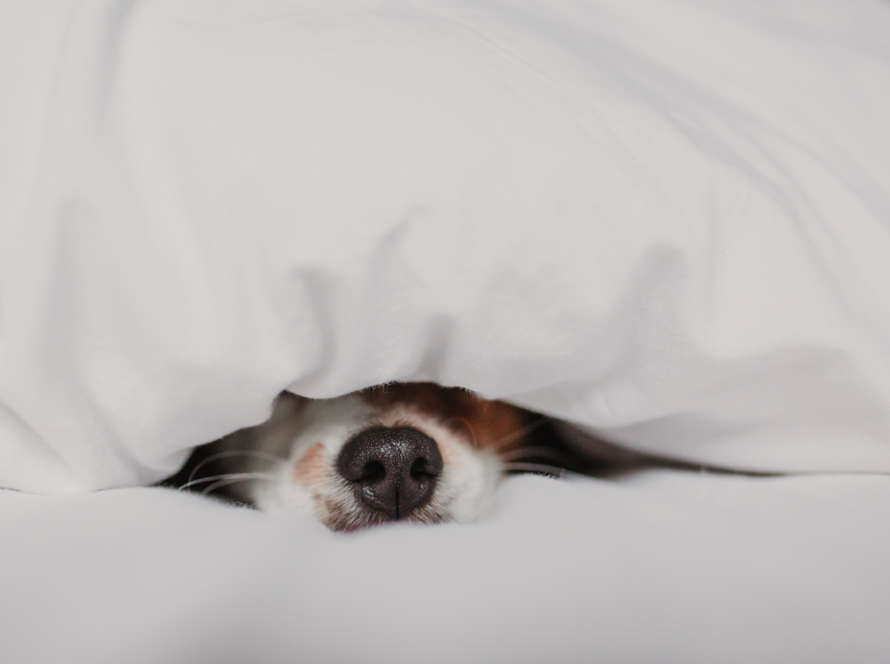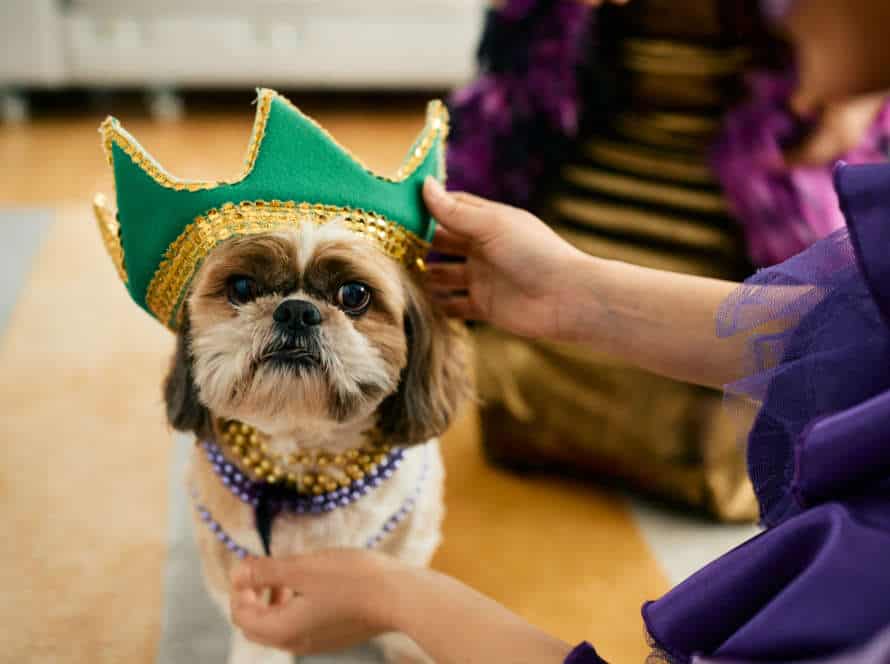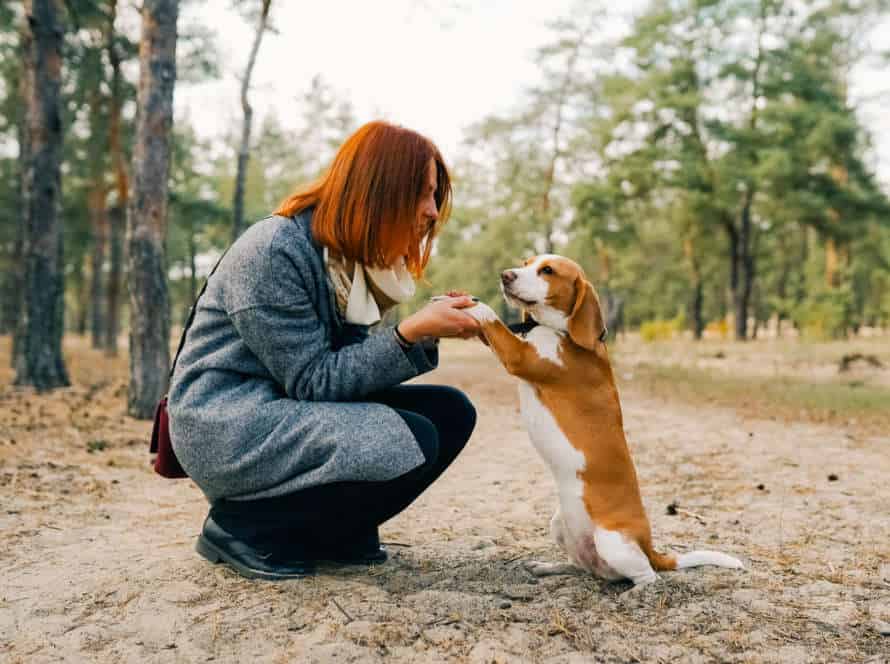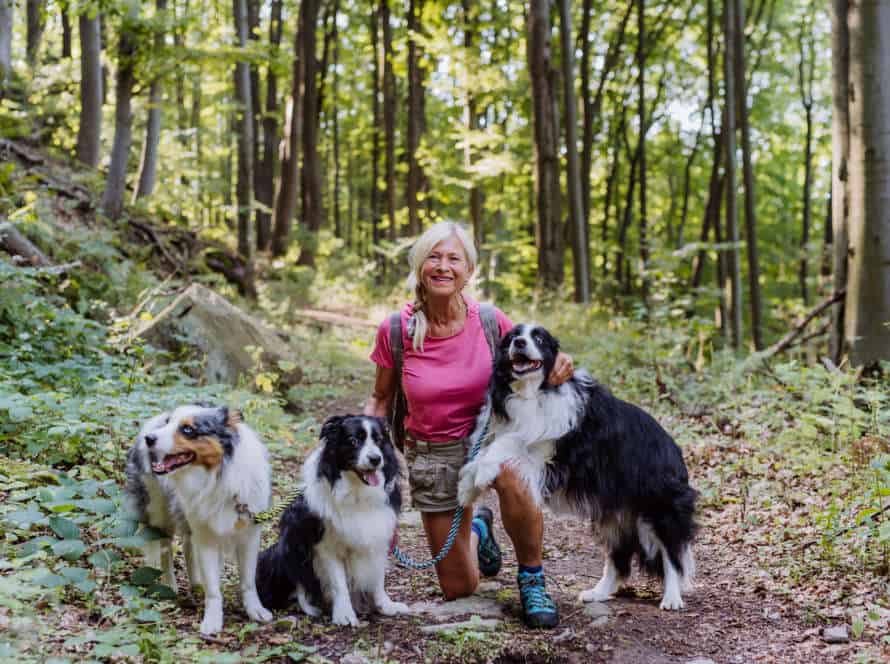Quality Time: Building Individual Bonds with Your Dogs
Creating a special bond with your pooch is key to a stronger connection between you and your fur-friend. Quality time spent with your pup can help lower the risk for behavioral issues, anxiety, and depression.
Here are three tips for bonding with your pup:
- One-on-One Activities: Take your dog for a walk or play fetch! Bonding through physical exercise is a wonderful way to build trust and bond.
- Training Time: Spend time training your dog. Doing so one-on-one can be a rewarding experience for both of you.
- Relax and Chill: Let your pup join you for a relaxed session on the couch or pet them while you watch TV. This type of bonding is especially useful for dogs with separation anxiety or other behavioural issues.
Pro Tip: Connecting individually with your dog not only strengthens your relationship but also enhances their overall quality of life.
Understanding the Importance of Individual Bonding
Individual bonding with your dog is key. Spending quality time together creates a close relationship, helping build trust. This also strengthens the bond you already share. To keep your pet happy and healthy, understanding the importance of quality individual time is essential.
Benefits of individual bonding for dogs and humans
Bonding between dogs and humans is essential. It builds strong relationships and is good for wellbeing. Quality time with your dog creates communication, understanding and trust. Here are three advantages of individual bonding:
- Better communication: One-on-one time allows you to read their body language and vocal cues. You can understand their needs and wants better.
- More trust and obedience: It helps build trust and strengthens the bond. When your dog knows they can rely on you for love and attention, they will obey you.
- Reduced stress and anxiety: Quality time reduces stress and anxiety. This brings joy and a fulfilling life to both you and your pet.
Factors that affect individual bonding with dogs
Dogs and their owners share a unique bond. To make it stronger, it’s important to understand the factors that influence it.
- Age: Puppies build the strongest bonds with their owners.
- Breed: Some breeds of dogs are more social and emotionally attached.
- Socialization: Early socialization helps puppies form healthy relationships.
- Environment: An unstable or stressful environment can make it harder to bond.
Quality time, patience and effort are needed to build an individual bond with your dog. Playing, exercising, and training will strengthen your relationship and deepen the bond.
The differences between group and individual bonding
Group and individual bonding with your dogs have significant differences. It’s essential to recognize them for a strong, lasting relationship.
Group bonding usually involves spending time with other people or dogs. It creates a fun and social environment.
Individual bonding requires one-on-one time with each dog. It helps to understand their personalities, preferences and needs.
Group bonding has its benefits, but individual bonding is essential for a strong connection. It enables tailored training and health regimes. Both have advantages and drawbacks. Giving individual attention strengthens the bond.
Pro Tip: Make sure to have quiet, alone time with your dog regularly!
Activities for Individual Bonding
Spend quality time with your dogs! This is a great way to exercise their bodies and minds. Plus, it strengthens the connection between you and each of your furry friends. Activities that cater to each dog’s likes, preferences, and personalities are even better. Here are some awesome activities for strengthening your individual bond with each pup!
Indoor Activities
Indoor activities are an awesome way to have quality time with your doggo and create a special bond with them. Here are some stuff you can do with your pup:
- Train them new moves: Teaching your pup new tricks can be a fun and rewarding experience. From simple commands like sit and stay, to more complicated ones such as rolling over or playing dead- there’s no limit!
- Play: Hide and seek and fetch are great ways to bond with your pup and give them the exercise they need.
- Cuddle: Make sure you take some time out of your day for cuddles with your pup. Dogs are social animals and love physical contact, so this is a great way to make a strong bond.
- Obedience training: Doing obedience training together is a nice way to bond and teach your pup important lessons.
- Puzzle toys: Puzzle toys challenge your pup’s mind and keep them entertained. These are a fun and engaging way to spend time with your furry friend.
Pro tip: Keep your pup’s safety in mind when choosing indoor activities. Avoid activities that may harm your pup or damage your home.
Puzzle games and treat dispensers
Puzzle games and treat dispensers are awesome ways to strengthen your bond with your pup. They also provide entertainment and mental stimulation. Puzzles come in a variety of designs and levels – perfect for any play style! Treat dispensers reward your pup’s curiosity with a yummy snack.
Popular puzzles include:
- Kong Classic Dog Toy
- Nina Ottosson Dog Tornado Puzzle Game
- Outward Hound Hide-a-Squirrel Puzzle Game
Treat dispensers:
- Busy Buddy Twist ‘n Treat
- PetSafe Busy Buddy Barnacle
- KONG Wobbler Treat Dispenser
With regular use, these activities help improve your pup’s behavior, reduce anxiety and increase your bond.
Hide and Seek
Hide and Seek – a great way to bond with your pup! Here’s how to do it:
- Grab some yummy treats your pup loves.
- Show them the treat and ask them to stay in one room.
- Then, hide the treats in another room or around the house.
- Go back to your pup and say “Find it!”
- Encourage them as they search and reward them when they find it.
- Make the game harder by hiding the treats in harder places or using more treats.
Pro tip: Not only is it fun, but it also keeps your pup’s mind active and stops them from getting bored.
Training sessions
Training sessions are great for forming bonds between you and your pup. They even have physical and mental health benefits! To help you build better relationships with your dog, here are three activities you could do:
- Obedience Training: Teach commands like “sit”, “stay” and “come”. This builds trust and respect, and also establishes a routine.
- Agility Training: Challenge your pup to navigate an obstacle course. It encourages physical strength, focus, and problem-solving skills.
- Trick Training: Teach your pup fun tricks like “play dead” or “roll over”. This strengthens the bond and reduces boredom and anxiety.
Outdoor Activities
Head outdoors with your pup for a fun and special time together! Here are some activities to make your bond even stronger:
- Hiking: Taking a walk with your four-legged friend is a great way to exercise, enjoy nature and improve your relationship. Make sure your pup is trained and listens to your commands.
- Fetch: A classic game that’s perfect for bonding and helping your pup grow physically and mentally.
- Swimming: If you have access to a dog-friendly beach or lake, take advantage of it! Swimming is a low-impact exercise that’s great for both of you.
- Camping: An amazing experience! Pack up the car and explore nature with your pup. Follow camping regulations and keep them safe and comfortable.
These outdoor activities are great for fostering a strong connection with your furry buddy while having fun and staying healthy.
Long walks and hikes
Take a long walk with your pup! It’s a great way to bond and stay healthy. Whether you have a high-energy breed or a senior, it’s a fantastic opportunity to build trust and communication.
Here are some tips to make the most out of it:
- Pick a scenic route with lots of exploration possibilities.
- Bring water and snacks.
- Use a secure leash and harness to keep your pup safe.
- Take plenty of breaks and let them sniff around.
- Use positive reinforcement to reward good behavior and strengthen your bond.
Playing fetch
Playing fetch is fun for both dogs and their owners. Here’s how to do it:
- Use a safe and soft toy or ball in an enclosed space with no distractions.
- Show the toy to your pup and throw it a short distance.
- Praise and reward them when they bring it back.
- Increase the distance and add new toys for extra fun.
- Take breaks often to keep them from getting tired.
Fetch is a great way to stimulate your pup physically and mentally.
Agility and obstacle courses
Agility and obstacle courses are a fun way to strengthen the connection between you and your pup! Not just physical exercise, they also offer mental stimulation. Plus, they can improve obedience and listening. You can start with a DIY course – chairs, cones, even your body as hurdles. As your pup gets more comfortable, add new obstacles like jumps, tunnels, and weave poles. Doing these activities is a great way to bond, communicate better, and have lots of fun! Pro Tip: Make sure your pup can handle the course, and start with easier obstacles first.
Communication Techniques to Enhance Individual Bonding
Dogs enjoy socializing! They love forming strong bonds with humans. Spending quality time with your pup is a great way to show affection. Here are some useful tips to strengthen your bond with your pooch!
- Take them for walks together.
- Play games with them.
- Spend time cuddling together.
- Give them lots of love and attention.
- Praise them often.
- Take them on trips with you.
- Talk to them.
- Provide them with mental stimulation.
These are just some of the ways you can create a strong bond with your canine companion!
Understanding your dog’s body language
Knowing your pup’s body language is vital for talking well and creating a strong bond with your four-legged pal. Dogs show their feelings through body gestures such as their facial expressions, posture and tail movements. Here’s what to look out for while understanding your pup:
- Tail: A waggy tail shows they’re pleased and possibly playful. A straight tail means they are curious or attentive, while a tucked tail displays fear or worry.
- Eyes: Wide or squinting eyes can show aggression or fear.
- Ears: When they stand up, it means they’re attentive and interested. When they lay flat, it shows submission.
- Mouth: Pulling back their lips to bare teeth is aggressive, while a tongue out or panting is a sign of being relaxed.
By observing your pooch’s body language, you can comprehend their feelings and emotions better and form a stronger relationship. Spend quality time and initiate positive, rewarding interactions to get closer to your pup.
Training your dog to understand specific commands
Training your pup to comprehend commands is a crucial part of creating a strong relationship and efficient communication with them. Here are some tactics:
- Utter words distinctly: Employ a plain and persistent pitch when uttering orders. Refrain from using words that sound alike or have different meanings.
- Employ hand signals: Many dogs react well to visual cues, such as hand signals or pointing. Merge verbal commands with consistent gestures to strengthen your message.
- Be positive: Reward your dog with treats, compliments, and love whenever they obey a command. This will encourage them to repeat the desirable behavior.
- Consistency: Consistency is essential when training your dog. Use the same commands and methods all the time to prevent confusing your pet.
- Patience: Each dog learns at their own speed. Be patient and steady when training and reward even minor successes.
Pro tip: Regular training sessions with your pup won’t only improve communication and bonding but also give brain stimulation and cut down on destructive behavior.
Affectionate touch and bonding techniques
Ways to connect with your pup and boost communication exist! Here are fun things to do that can create a special bond:
- Lock eyes with each other. Eye contact can show trust and connection.
- Have a blast! Fetch, tug-of-war, and hide-and-seek are all great games to play.
- Go on walks. Get exercise and spend quality time outside.
- Train together. Bond and learn by teaching your pup new things.
- Give affection. Petting, cuddling, and grooming are good for health and happiness.
Common Mistakes During Individual Bonding
Bonding with your pup is a wonderful way to create trust and respect. But, you need the right attitude when attempting it.
Let’s check out some of the mistakes dog owners make when bonding with their canine companion.
Lack of consistency
Inconsistency is a frequent mistake when dog owners seek to bond with their pet. Dogs adore routines and consistency so it’s important to create a regular routine of activities and keep it! Here are some tips:
- Plan activities together with your pup, like walks, play, or training.
- Be consistent in your behavior and goals when interacting with your dog.
- Reward good behavior constantly, and don’t ever reward bad behavior – it can be confusing.
Remember, creating a bond takes time and patience. Sticking with consistency makes sure your hard work pays off eventually!
Over-reliance on treats
Treats can be useful, but using them too much can cause a lack of engagement and respect in your pup. It’s important to build a strong bond with your dog without relying solely on treats.
Instead of treats, focus on verbal praise, physical affection, and consistent rules and boundaries.
Spend time with your dog and do things they like, such as playing fetch or going for a walk.
By building a bond based on respect and positive reinforcement, you will have a lasting and fulfilling relationship with your canine pal.
Not acknowledging your dog’s comfort level
Building an individual bond with your pup is essential. Not doing so can be a mistake. Here are some things to consider for comfort and safety:
- Begin with short, frequent sessions. Increase the length when your pup’s attention span grows.
- Read their body language for signs of discomfort. Panting, pacing, or licking their lips are all signs to look for.
- Do activities that fit their temperament and preferences. Playing fetch, taking a walk, or cuddling on the couch are all excellent ways to bond.
- Don’t overwhelm or force them to do something they’re not comfortable with. This can lead to fear or anxiety.
By following these tips and being responsive to your pup’s needs, you can strengthen the bond and ensure their well-being.
Conclusion: The Value of Building a Strong One-on-One Relationship with Your Dog
To wrap it up, a solid one-on-one connection with your pup is immensely advantageous and a must for their wellbeing. Why? Dogs love attention and are more secure when they have a powerful bond with their owners.
Taking the time to get to know each dog’s individual character and preferences is key. This way, you can customize your education and take care of them accordingly. Plus, when you cultivate a strong relationship, it reinforces trust, respect, and communication. As a result, it decreases the chance of behavioural issues and strengthens obedience and responsiveness.
Set aside quality time with each of your dogs, doing activities that you’ll both enjoy – like training, playtime, or walks. Investing in one-on-one bonds with your pooches will pay off later on and make your furry friends ecstatic.
Frequently Asked Questions
Q: What is quality time with your dog?
A: Quality time with your dog refers to the time spent bonding and connecting with your dog, through activities such as play, training, and relaxation.
Q: Why is quality time important?
A: Quality time is important because it strengthens the bond between you and your dog, enhances their training, and improves their overall wellbeing.
Q: What are some examples of quality time activities?
A: Examples of quality time activities include playing fetch, going for a walk, cuddling, teaching new tricks, and grooming your dog.
Q: How much quality time should I spend with my dog?
A: It is recommended to spend at least 30 minutes to an hour of quality time with your dog each day. You can also break this up into shorter sessions throughout the day.
Q: Can quality time improve my dog’s behavior?
A: Yes, spending quality time with your dog can improve their behavior by providing them with the attention and stimulation they need, reducing their anxiety and boredom.
Q: How do I make the most of quality time with my dog?
A: To make the most of quality time with your dog, establish a routine, choose activities that they enjoy, provide positive reinforcement, and most importantly, have fun!







